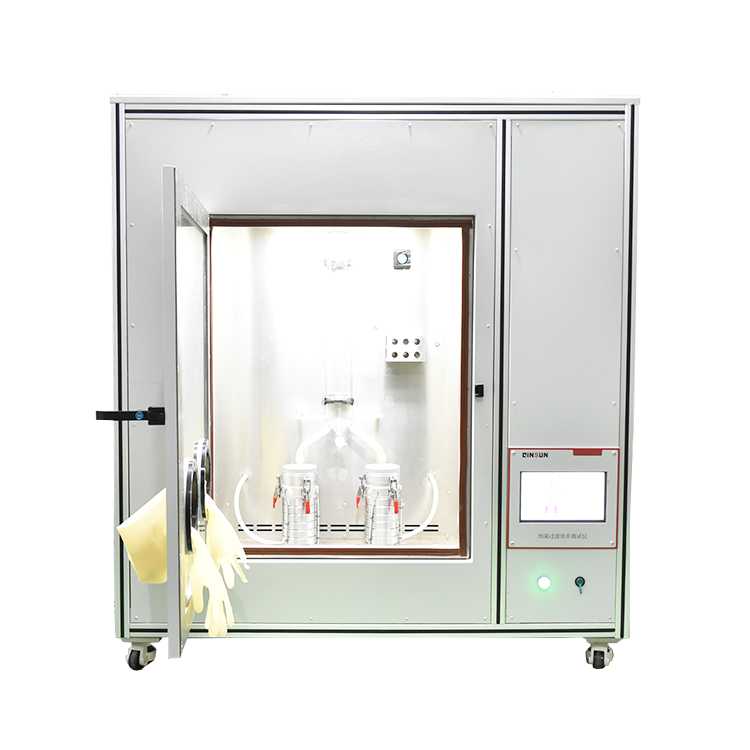
NewsInformation Center
Masks Bacterial Filtration Efficiency (BFE) testing equipment test procedure
2022/07/26
Masks Bacterial Filtration Efficiency (BFE) testing equipment is a test of the percentage of bacterial suspended particles removed by a mask material at a specified flow rate. It mainly examines the filtration efficiency of the mask material against bacteria.
Masks Bacterial Filtration Efficiency (BFE) testing equipment test procedure:
1. Start the instrument and perform air cleaning.
2. Install the Staphylococcus aureus solution, start the peristaltic pump and supply the solution to the tip of the sprayer.
3. Install the mouthpiece sample in A-way, B-way as positive QC, and install the flat dish into the Anderson sampler.
4. Set instrument parameters.
5. Remove the sampled flat dishes, mark the layer number and place them in the incubator to count the positive pore count values for each layer of the plate.

6. Calculate the result, BFE=(positive QC average - sum of experimental sample counts)/positive QC average*100%
Note: YY 0469-2011 stipulates that the bacterial filtration efficiency of masks should not be less than 95%.
Testing cycle & sample delivery notes for masks.
①Mask test sample volume and testing cycle, depending on the actual situation of the test items;
②Masks need to be pre-treated, the testing cycle needs to be increased by 3-4 days;
③Samples must be sent to ensure that the packaging is intact, to ensure aseptic sampling and sub-assembly.
NTEK, as a global third-party comprehensive authoritative testing and certification organization, has a full set of advanced protective and medical mask testing equipment. In order to help enterprises control product quality and control risks, the laboratory is now open to the world to provide quality pre-testing for customers of masks and meltblown fabric and other materials.
Previous: xenon lamp aging test chamber lamp rupture cause analysis
N e x t : Analysis of the 4 most common failures of UV Aging Test Chamber



